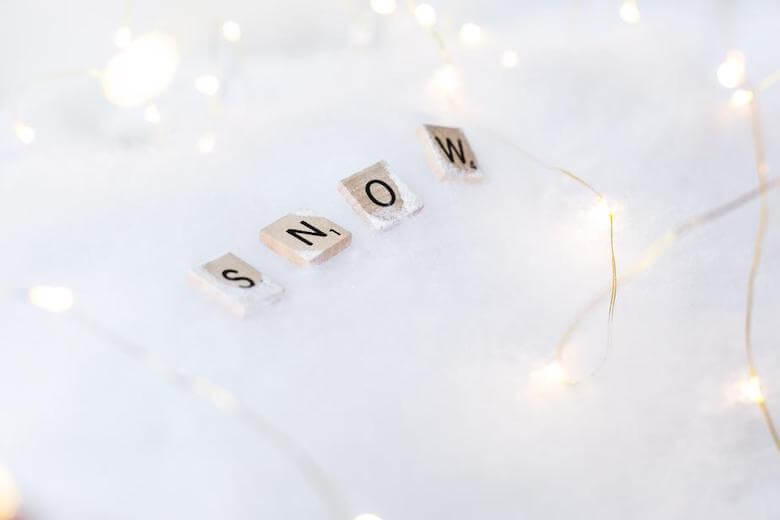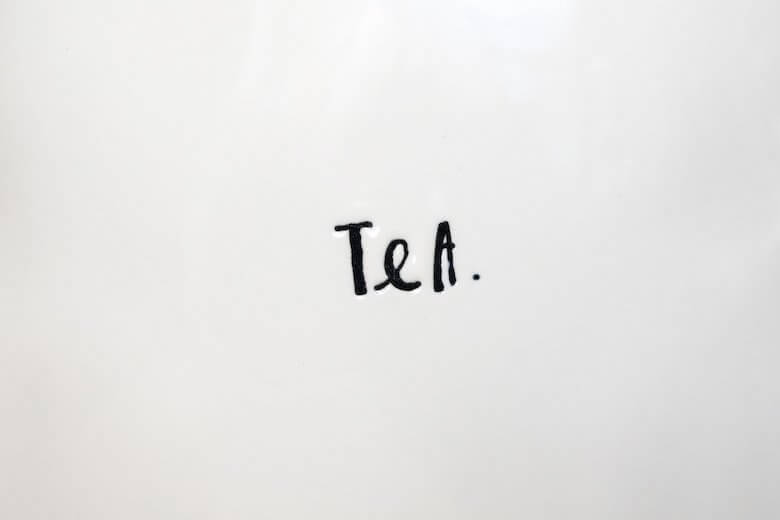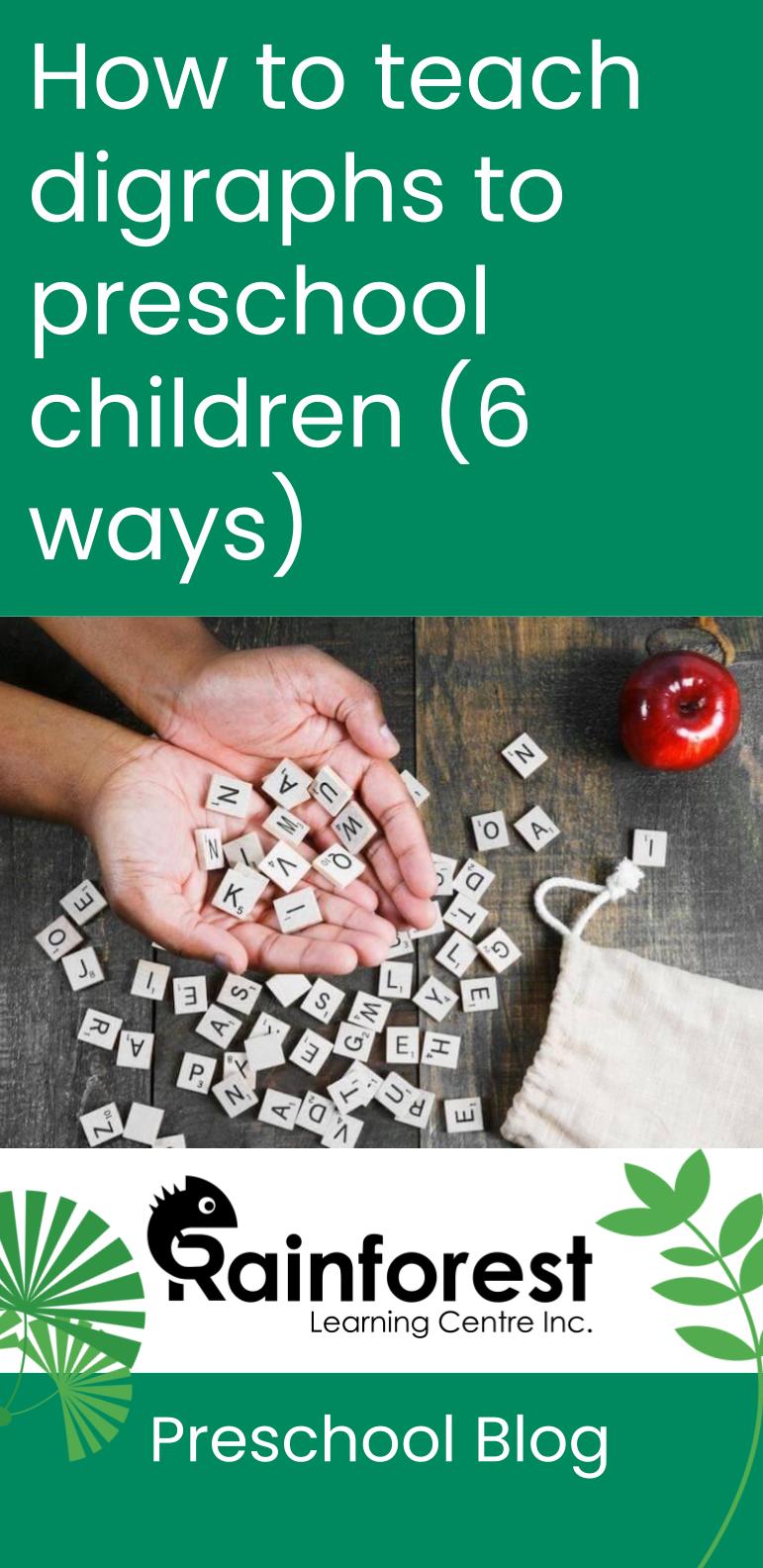
Teaching digraphs to preschool children would naturally follow phonics, and perhaps, work with ‘blends,’ too. The hard thing about digraphs is that, honestly, they don’t make sense! English is a tough language to learn. Nonetheless, with good teaching, children can pick up on English spelling and usage. But remember: the logic, at its core, is lacking. So with situations like digraphs, the only way is through memorization.
What’s the best way to memorize? Through associations! In other words, that means: lots and lots of fun activities to learn digraphs as a preschool lesson.
On this note, you may want to check out our other articles on learning to read in preschool:
- 5 Simple ways to teach preschoolers phonics basics
- What is the best way to teach word recognition to early childhood readers?
- Why is literacy crucial in the early years? How can parents and preschools help with reading skills?
Let’s get to it!
What are digraphs? Are preschoolers too young to learn digraphs?
Digraphs refer to instances in the English language where two or three letters make one sound. These letters don’t always make that ‘one sound’ when they are separated. For example:
C+H = “CHeeze”
Or
P+H = “PHonics”
And so on.
Preschool and kindergarten teachers split these into consonant digraphs and vowel digraphs.
Below are common consonant digraphs:
- Ch
- Sh
- Th
- Ph
- Qu
- Wh
- Ck
- Th
- Nk
- Ng
- Ff
- Ll
- Ss
- Zz
An, below are common vowel digraphs:
- Oo
- Ai
- Ay
- Au
- Aw
- Ee
- Ea
- Ey
- Ei
- Ie
- Ou
- Ow
- Oe
- Oy
- Ue
This gets even more confusing when a digraph is used in the past tense or future tense version of a word, but not in the present tense. Here is how ThoughCo. explains it (by quoting another author):
A particular difficulty for children is learning to spell words that deviate from what they have come to expect in their learning process. This is often the case, according to Rebecca Treiman and Brett Kessler in “How Children Learn to Write Words,” with the past tense. As an example, they note that the past tense of mess (messed) sounds like mest and that of call (called) sounds like cald, each of which is still one syllable, while the past tense of hunt, which adds the ed sound to make hunted, has two syllables. Children are used to the latter pattern and find the former one odd.”
-Nordquist, Richard. “Definition and Examples of Digraphs in English.” ThoughtCo, Aug. 26, 2020, thoughtco.com/digraph-sounds-and-letters-1690453.
So, with all this confusion, we can ask: are preschoolers too young to learn digraphs?
After all, they’re having to learn letters, phonics, sight words and just words, in general. It’s a lot to take in, right?!
The answer is: it depends.
By using concepts such as the theory of multiple intelligences, we can see that some children may excel in certain academic areas than others. We would say that children can certainly possess the capacity to learn digraphs at a young age – even as preschoolers. That is, after they’ve ‘nailed down’ letters and phonics.
But if it doesn’t ‘click’ for the entire classroom all at once, don’t fret about it. Just keep singing those games, using those flashcards, and pointing out those letters and words with teachable moments.
All of that digraph prepwork they get in preschool will eventually come to fruition by the time they enter kindergarten and grade school.
1) Learn digraphs with hand gestures and sounds, through imitation games
Memorizing digraphs with preschoolers and early learners can be part of a fun imitation game. Children can learn to follow along as you make expressions to associate with digraphs.
The most common example of doing this would be with the “Shhhh” sound, for the digraph “Sh.” We often put our index finger on our lips to indicate that “Shhhh” means to be quiet. Children recognize the meaning of “Shhhh” by hearing it, verbally. But they may not yet know how it is spelled, or read aloud through the representation of letters. That’s because, “s” and “h” should, logically, sound like “suh” and “hu,” right? Nope, not in English!
So, if you show children these visual letters together on a flash card, and explain that, “S and H make Shhhhh” they can start to learn that letters put together make new sounds. Then, follow with the aforementioned ‘be quiet’ motion (i.e. index finger on lips). This action can help them remember the digraph for future instances when they are trying to read these letters in written words.
But “Shhhh” is just one example. There are many creative ways to remember digraphs. And perhaps one of the best videos to adapt from would be the following, by Little Learners:
Our favourites from the video above would be ‘not hearing anything’ by placing our palm to our ear and saying “ai? ai?” Or the “ng” sound with our muscle flexing exertions to say “ng, ng!” (as if we’re trying so hard to use strength, ha ha).
2) Use picture flashcards to point out digraphs with word examples
The next most obvious way to teach digraphs would be with flashcards (what else? They’re a teacher’s best friend!). Of course, when we say “flashcards” this can also mean posters, charts, and so on. The point is to show a picture of an object that is spelled using digraphs.
The flashcards you use should point out, in big letters, what the digraph is. If it shows the entire word also, just make sure the digraph part is bigger, or pointed out separately.
For example, show a flashcard with a chair in it, and the big letters, “Ch.” Hold it up for your classroom and ask them what sound the “Ch” letters make, or what word starts with “Ch”? Of course, they’ll see a picture of a chair, and that will be a big clue for their little minds to come up with an answer!
After you go through words and flashcards that use digraphs at the start of a word, use the ones that show the digraph in the middle and end.
You can also use flashcards that emphasize only the sound as it relates to the image. For example a picture of a train with the letters, “Choo-Choo.” Or a turtle that goes “slow” (for the digraph, “ow”).
Start with small, recognizable words the children will already be using at this stage in life.
You can also start small by splitting flashcard sets into the vowel and consonant digraphs. Definitely don’t throw a dozen digraphs into your preschool lesson on the first day!
3) Play word-building and match-up games to teach digraphs to preschoolers

A common way to ‘drill in’ the idea that two or three letters can make one sound, is with word-building and match-up games. What do we mean by this? These games usually come in paper-based learning materials (such as worksheets, reusable laminated charts or cards). You can buy them pre-made, or make your own.
Whether using a chart, or separated cards, children can:
- Match up the correct digraph to the noun in picture format. They’ll have to learn, for example, that “sh” goes with the image of the “ship.” They can do this by pinning or marking the correct digraph on the ‘match up’ worksheet.
- Spot the objects that start with a specific digraph on a chart.
- Put card pieces together to make whole words (i.e. word-building cards). These cards should contain separated digraphs and common word endings, or beginnings, that go with them. E.g. “ch” on one card can be paired with “ick,” “air,” “ip,” “lun” and “bea” on other cards. These make “chick,” “chair,” “chip,” “lunch,” and “beach.” Alongside you can have an “sh” card. See if the children can put together “sh” with the former, “ip” card to make “ship” and so on.
Should you bring in non-digraph word blends into these games? According to this resource, it’s best to teach digraphs before introducing blends. However, this can depend on you, and your preschoolers. If they are already learning many words with blends, it may be wise to start there.
Here is a resource for pre-made word-building materials to aid in teaching digraphs: https://www.youclevermonkey.com/2016/07/teaching-digraphs.html (though there are many more online, of course).
4) Read books that emphasize digraph sounds
There are some books out there that are written specifically to emphasize letter sounds, especially when they are digraphs. They may even highlight the digraphs and sounds in different colours, right in the text, so a child can notice them.
These types of books can help to give a child context when using words that contain digraphs in ‘real’ sentences. They are helpful when learning the meaning of new words, too.
5) Sing digraph songs with preschoolers
We’re just pointing out this teaching tip, knowing you’ll find plenty of options on YouTube! Sing songs with the children during circle time to keep emphasizing digraphs as single-sound phonetics made of two words!
6) Turn digraphs into themes for activities and crafts throughout the day

Just like you can have a week or month to focus on the letter “A,” and all the words that start with that letter, you can do the same with digraphs.
For example, maybe you’ll have a week that focuses on “ch.” Snack time can include “cherries,” “cheese,” and “chips” – with a strong emphasis on that “ch” sound!
You can play “I spy my little eye” by pointing out items that start with “ch,” such as “cheek,” “chair,” “chain,” “chicken” and “chimney.” You may need photographs or books for this one!
During craft time, the little ones can make garlands of “children” cut outs or paper “chains.” Or, they can draw outside with “chalk.” Because all of these things start with, “ch”!
When having outdoor time, they can guess a game that starts with “ch” (pssst, it’s “chase” the teacher!” Run!).
All the while, make a large “Ch” visible on your classroom wall, so the children know to keep spotting this digraph throughout their day.
Preschool children can learn digraphs along with phonics and letters, when teaching is fun
As we’ve seen above, there are plenty of fun ways to learn digraphs. Rote memorization will probably be too boring for early learners. So, while flashcards are great, they shouldn’t be used extensively. Turn digraphs into varied activities and games, so the preschool children can feel like they’re having fun all day while learning them!
See more on our blog:
